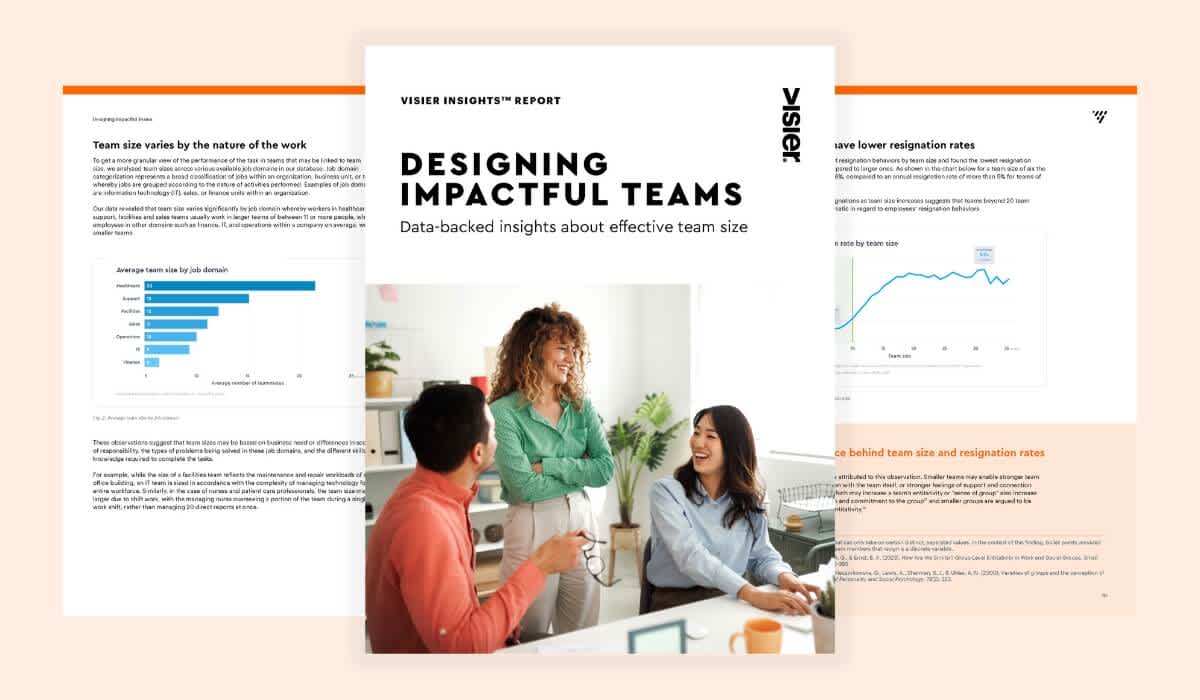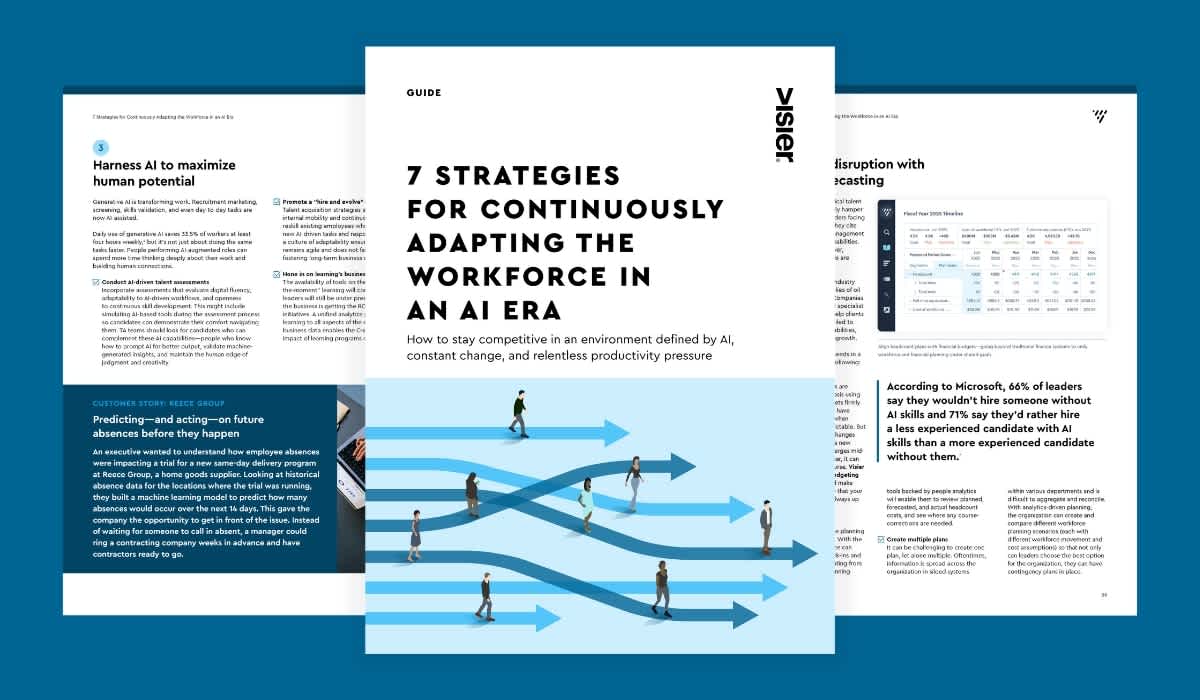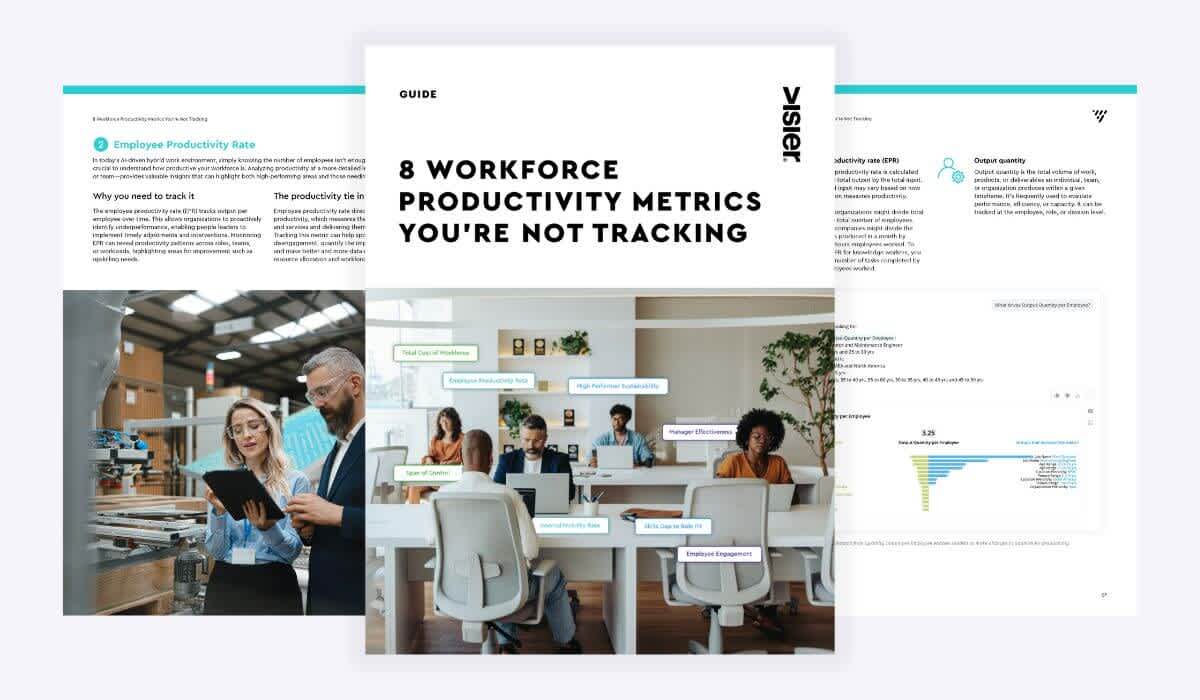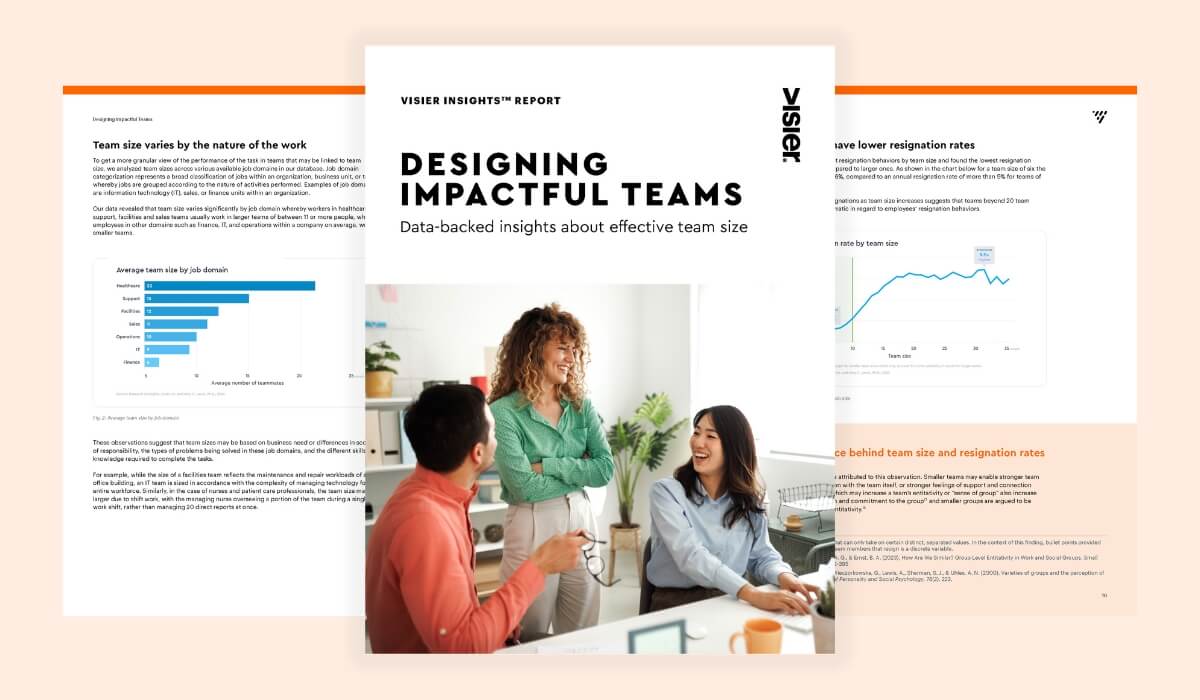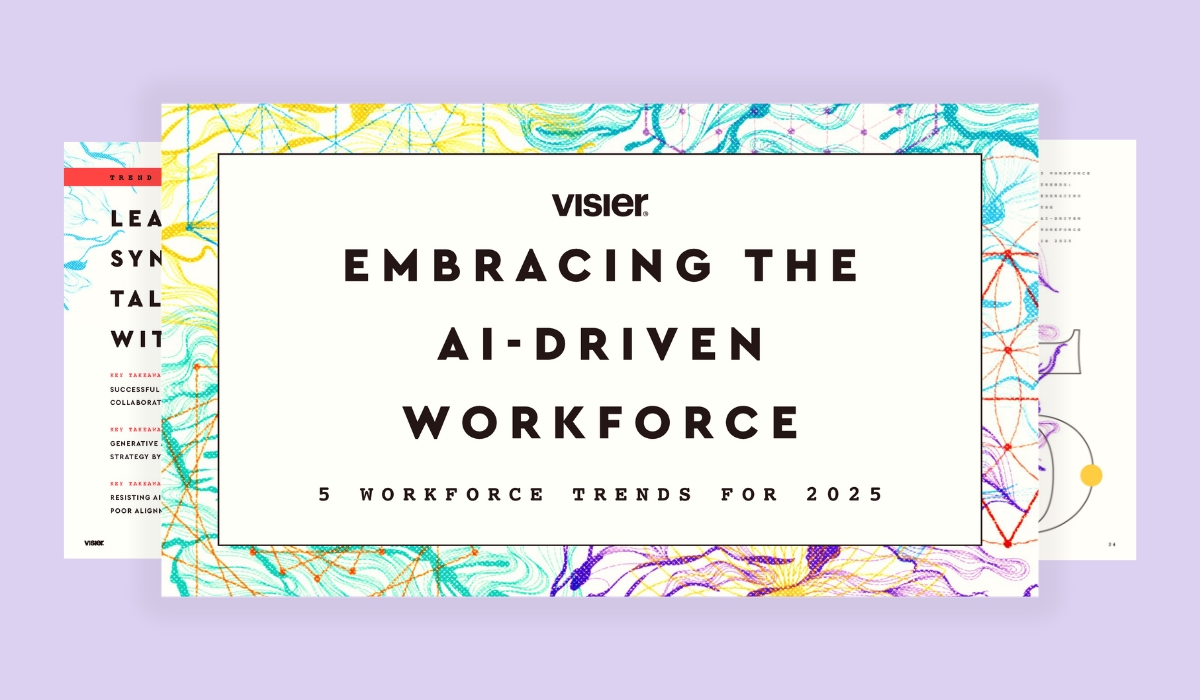HR STRATEGY
A Guide To Organizational Design
Organizational design shapes the way an organization is structured and run. It impacts employee well-being, engagement, and productivity. Read on to learn more.
Take a tour
Table of contents
What is organizational design?What is the goal of organizational design?When to conduct organizational designOrganizational design structuresThe ideal team size in modern organizationsUse people analytics to guide organizational designThe success of a company often relies on how well people can work together. Organizational design helps you create a strategy that enables seamless collaboration and makes room for innovation, creativity, and productivity.
What is organizational design?
Organizational design is a process that shapes the way an organization is structured and run. It dictates the creation of job roles, reporting structures and relationships, and general workforce processes.
We can also define organizational design as the execution of a company’s strategic plan, as your strategy will help you determine the best organizational design.
It includes many business aspects, such as:
How to form and structure teams
Lines of reporting
Decision-making procedures.
A few decades ago, organizations typically had a hierarchical structure. There was a strict division of labor, a clear chain of command, and a centralized decision-making process. In time, things shifted.
There are still companies that still use a hierarchical structure, but most times, organizational design is more complex. There is a greater emphasis on employee satisfaction and well-being. Spans and layers come into play, authority is often distributed, and there are decentralized decision-making procedures in place.
What is the goal of organizational design?
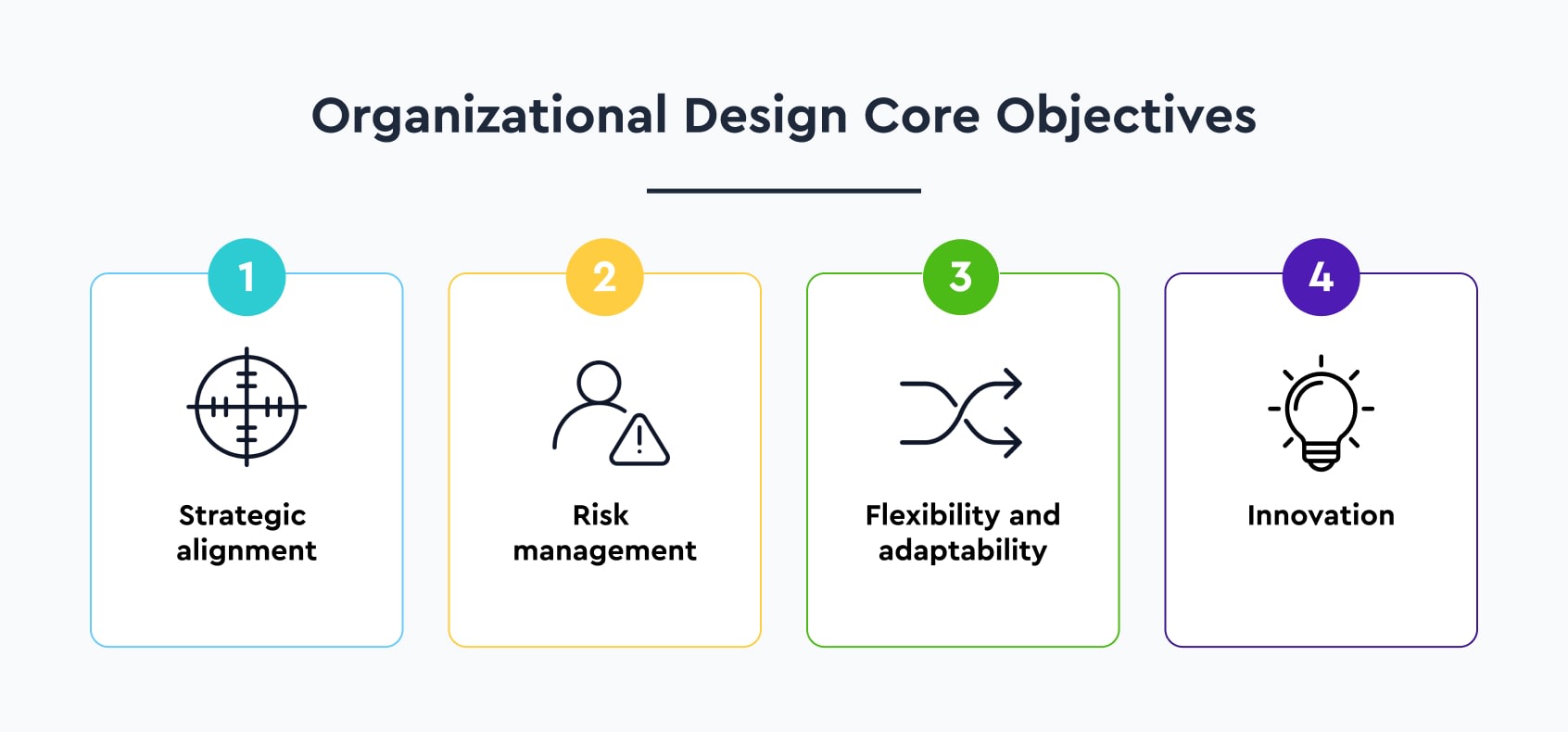
The primary goal of organizational design is to create a framework that enables companies to achieve their goals efficiently by helping to improve communication, productivity, and innovation amongst employees. It helps you align your business strategy with various internal components, such as people, tasks, and processes.
The core objectives of organizational design include:
Strategic alignment. Aligning your design with your strategic objectives is a must and a step to help you be more effective and productive.
Risk management. With organizational design, you can establish structures that will make it easier to assess, identify, and mitigate various risks.
Flexibility and adaptability. Organizational design ensures a company can thrive during uncertain or changing times.
Innovation. By facilitating collaboration and cross-functional communication, organizational design promotes a culture of innovation.
A good organizational design boosts productivity, engagement, and employee satisfaction. It makes it easier for people to work together, leading to streamlined processes and resource optimization.
When incorrectly used, this process comes with challenges and risks. If your design is not aligned with your employees’ collective values, or if roles and responsibilities aren’t clear, there’s the potential for creating a toxic environment and low employee engagement.
When to conduct organizational design
Most times, external or internal factors and changes will trigger organizational design. Here are some scenarios that may warrant this process.
1. Changes in the environment
These can be both internal and external. Perhaps you want to introduce new software in your company, which will come with new jobs or even a new department. Maybe there’s a new rival company and you need to trigger organizational design to keep up and stay competitive.
There might also be some new legislation that will impact the way you do business. The GDPR, the CCPA, and other similar privacy regulations are good examples of external triggers.
2. Changes in your strategy
Aligning design with organizational strategy is a must. That’s why when a new strategy comes into place, you’ll often need to rethink your organizational design.
Sometimes that could mean big changes are coming. Other times, it will only trigger minor changes. Whatever the case, you’ll need to rethink your organizational design to make sure it’s in tune with the new strategy.
3. A merger or acquisition
Mergers and acquisitions almost always lead to changes within a company. Your entire structure could change, as well as the business strategy and the goals. People might leave, some positions or departments will become obsolete, and new ones might open up.
Workforce planning and organizational design become necessary if you want to ensure the company will keep functioning well and adapt to the changes associated with M&A.
4. Your current design doesn’t fit anymore
Sometimes your values and goals shift imperceptibly. One small change today, another one tomorrow. Before you know it, you realize your current design doesn’t align with your strategy and your purpose any longer.
In these cases, a reassessment of your current organizational design may be necessary, which could lead to either targeted or company-wide changes.

Organizational design structures
There are multiple types of organizational design. The two main ones are traditional, hierarchical structures, and modern, organic structures. Let’s look at each of them.
Traditional structures
Traditional structures in organizational design were—and still are—hierarchical. They have strict lines of responsibility and there is an emphasis on the separation into functions, departments, and roles, respectively.
Collaboration is minimal, especially for lower-level employees. They have little to no say in big company decisions and communication almost always happens from the highest-ranking employees to the lower-ranking ones. Those at the top will have the full picture, while those in lower-ranking positions will only know strictly what is relevant and pertinent to their role.
Hierarchical structures may be of two types: functional or divisional.
Functional structures come with various departments, such as marketing, HR, and accounting. Each has its own managers, and all report to the CEO.
In a divisional hierarchical structure, the company is divided depending on location. Each location is independent, focusing on its own strength and performance.
Modern structures
Unlike traditional structures, modern structures are organic and don’t have such a strictly defined hierarchy. There will often be less separation between the various functions. Communication is more fluid and lower-level employees can make a bigger impact on the decision-making process.
The most common modern structures you’ll find are network and flat structures, respectively.
Network structures focus on their core expertise and functions and outsource the rest. They emphasize collaboration, are very flexible, and can quickly adapt to changes.
Flat structures have a simple hierarchy with few to no middle management levels. This makes collaboration between the leadership and the rest of the company easy, with open communication and quick decision-making being two of the major benefits.

The ideal team size in modern organizations
When considering the ideal team size in organizational design, there isn't a one-size-fits-all answer. The appropriate team size can vary greatly between different companies and industries. Some situations, such as specific industries or projects, might need larger teams, while others may achieve success with just a few members.
For instance, a Visier study found teams in the Healthcare, Retail, Wholesale, Transportation, Warehousing, and Manufacturing sectors will often be quite large. On the opposite end, teams in the Financial or High-Tech industries tend to be smaller.
Have a team that’s too small, and people might end up with too much work on their plate. With a team that’s too big, engagement might drop. So what is the ideal team size? Visier research revealed most people work in teams of six to 10 people.

Some find it harder to work in larger teams versus smaller ones. Their productivity decreases as the size of the team grows, a phenomenon called the Ringelmann Effect. Plus, bigger teams will require more management effort and effectiveness.
Use people analytics to guide organizational design
Organizational design is constantly evolving to enhance productivity, performance, and employee satisfaction. Companies are increasingly moving away from strict hierarchical models to more flexible, organic structures. These allow for easier communication and collaboration, making it simpler to adapt to market changes and ensuring employees feel valued.
Organizational design teams are responsible for setting up reporting structures and deciding the number of hierarchical levels. This involves determining the layers of management and the span of control for each manager. They also define the size and composition of teams. An HR practice focused on organizational design aims to establish optimal reporting relationships, manager-to-employee ratios, and team setups.
Use people analytics to find the ideal span of control to inform the best team size for your organization. This will show you the ideal numbers by department, by leader, and more factors to take into consideration.

